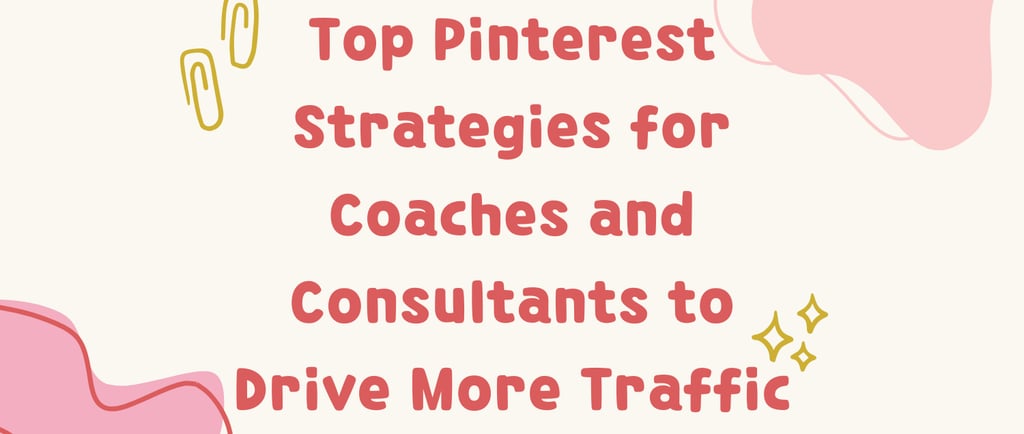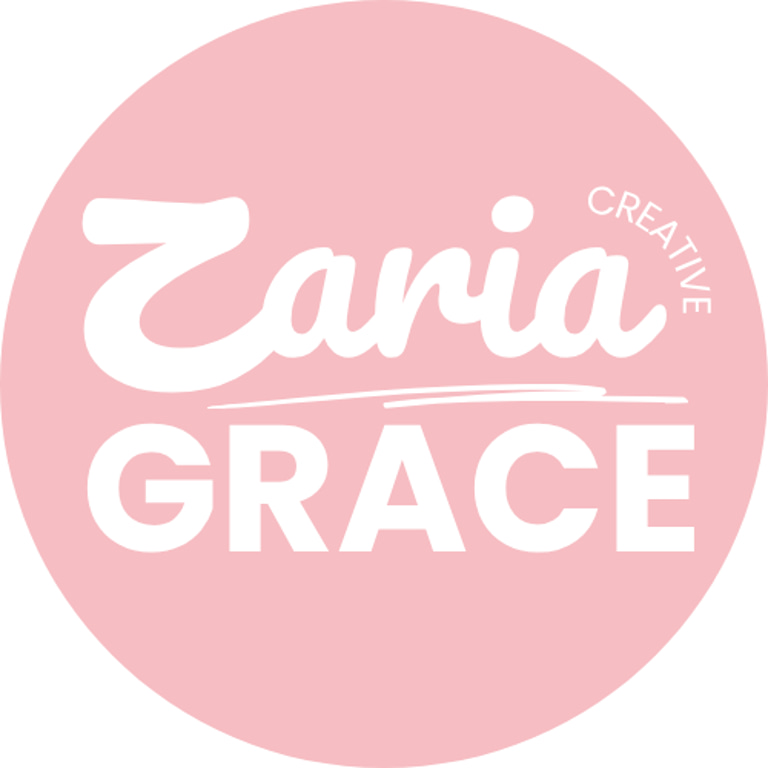Top Pinterest Strategies for Coaches and Consultants to Drive More Traffic
3 min read


If you’re a coach or consultant trying to get more people to your website, your blog, or that services page you keep tweaking, Pinterest might be your new favourite tool.
It’s not just for recipes and DIYs anymore. Pinterest has become a powerful search engine where people go looking for help, ideas, and solutions. And if you show up with the right kind of content, they’ll find you, without needing to be “on” all the time like other platforms.
Here’s how to use Pinterest to drive steady traffic and grow your coaching business.
1. Make Your Pinterest Profile Work for You
Your profile is the first impression. It doesn’t need to be fancy, just clear and helpful.
Use a photo that builds trust. If you're the face of your brand, let people see you. It builds a connection.
Your bio matters. Write a short, keyword-friendly line about what you do and who you help. Think, “I help women ditch burnout and build better habits”—not “Empowering holistic transformation.”
Add your website. This lets Pinterest pull in data from your site (and gives you access to features like Rich Pins).
2. Don’t Just Post - Teach Something
Pinterest is built for helpful content. The more useful your pins are, the more likely people will save or click on them.
Share tips you already give clients. “3 Ways to Journal When You’re Overwhelmed” or “How to Create Boundaries Without Burning Bridges.”
Turn your best advice into lead magnets. If you’ve got a free worksheet, checklist, or short guide - pin it. Lead magnets are perfect for Pinterest because people expect to discover helpful resources there. Plus, they’re an easy way to grow your email list without being salesy.
Give people a next step. Link your pins to helpful blog posts or opt-in pages, not just your homepage. Think of Pinterest as a path, not a billboard.
3. Your Pin Design Matters More Than You Think
Pinterest is a visual platform, and boring pins get scrolled right past.
Use clean, bright images.
Add text over the image so people know what they’re clicking on (“Free Guide: How to Set Boundaries That Stick” works better than a vague photo of a latte).
Stick to 2-3 fonts and colours that match your brand. This helps people start to recognise your content over time.
Use vertical pins (1000x1500 pixels is the sweet spot).
4. Think Like a Search Engine, Not an Influencer
Pinterest isn’t about going viral, it’s about being found. And people find things using search.
Use the search bar to see what your audience is typing. Pinterest will suggest keywords—use those in your pin titles, descriptions, and board names.
Avoid being vague. Instead of “self-care,” try “self-care routine for stressed-out moms” or “daily habits for anxious entrepreneurs.”
Don’t forget to add a simple call to action in your description—something like “Grab the free workbook” or “Click to read more.”
5. Stay Consistent (Even if You’re Busy)
You don’t need to pin 30 times a day, but you do need to keep showing up.
Tools like Tailwind or Pinterest’s own scheduler can help you batch your content once a week and stay visible.
Pin your own content first, then mix in a few repins from others who post things your audience would find valuable.
Make sure your boards are clear and focused. If you’re a mindset coach, have boards like “Journaling for Clarity”, “Confidence Tips”, or “Personal Growth Worksheets.”
6. Reuse What You’ve Already Created
If you’ve already got blog posts, email freebies, or podcast episodes, turn those into Pinterest content. One blog post can give you 3-5 pins. One lead magnet? Endless.
Repurpose with purpose. A quote from a blog post becomes a pin. A tip you shared on Instagram becomes a new pin linking to your sign-up page.
7. Keep an Eye on What’s Working
Check your Pinterest analytics every week or two. Look at what pins are getting saves, clicks, or impressions. The goal is to make more of what’s working, not guess and hope.
Sometimes, all it takes is changing a pin title or uploading a new version of a pin for an old post to take off.
Final Thought: Pinterest Isn’t Fast, But It’s Worth It
If you’re looking for instant likes or comments, Pinterest isn’t the place. But if you want long-lasting traffic that keeps working behind the scenes (while you’re doing other things), it’s one of the best platforms out there.
The work you put in now -those pins, lead magnets, and blog posts - can keep bringing you new people months from now.
So don’t overthink it. Start simple. Start small. Just start.
You’ve got good things to share, and people are searching for exactly that.
